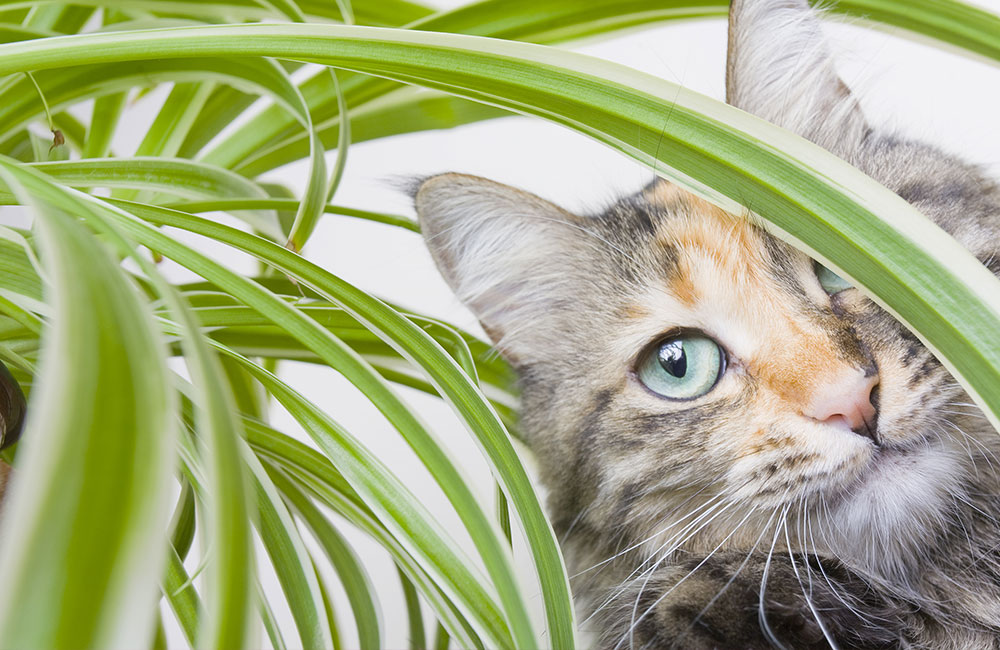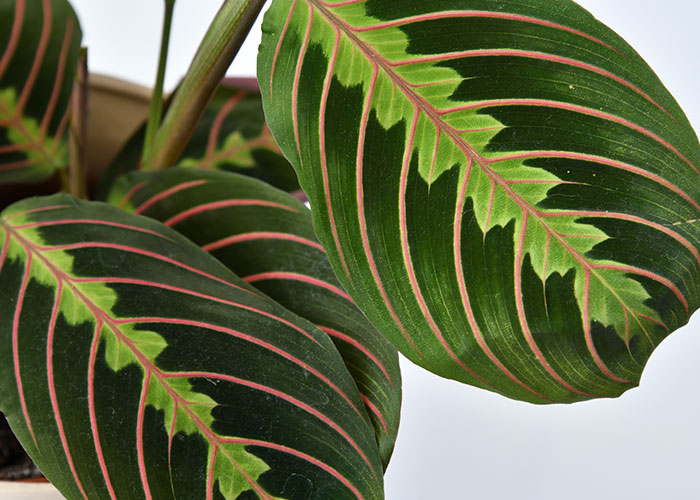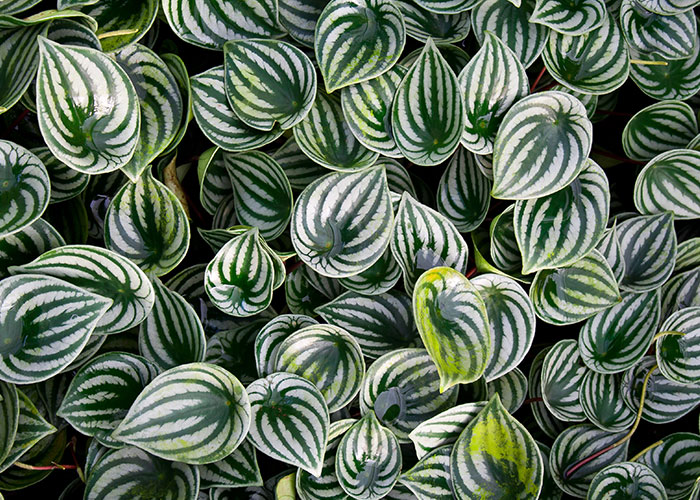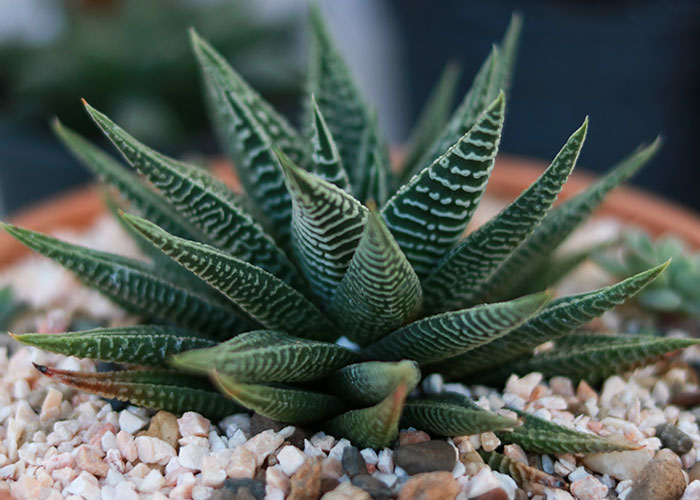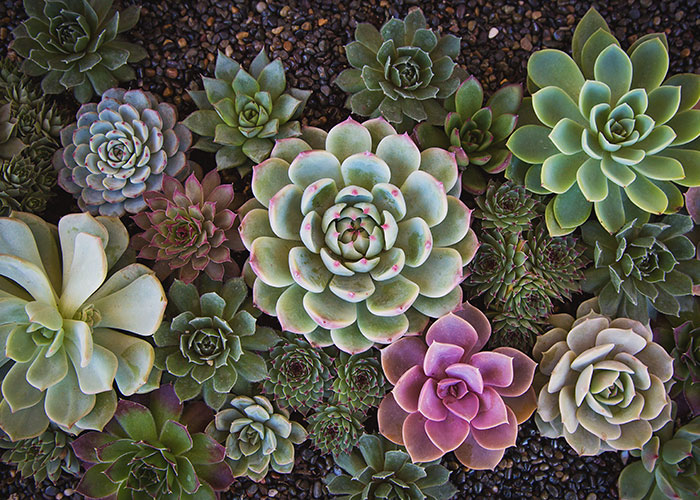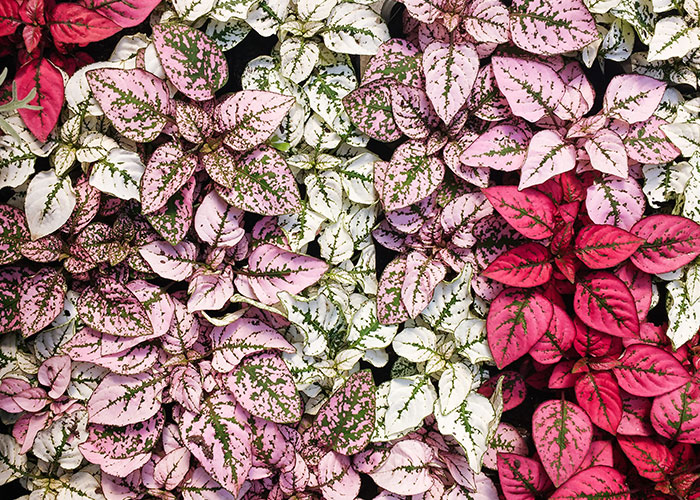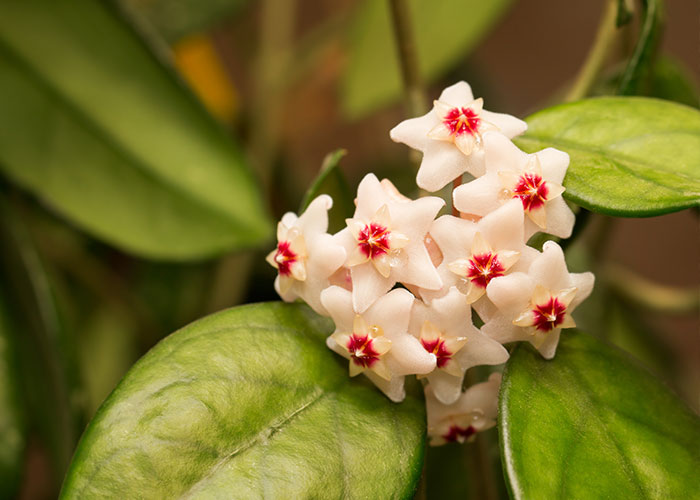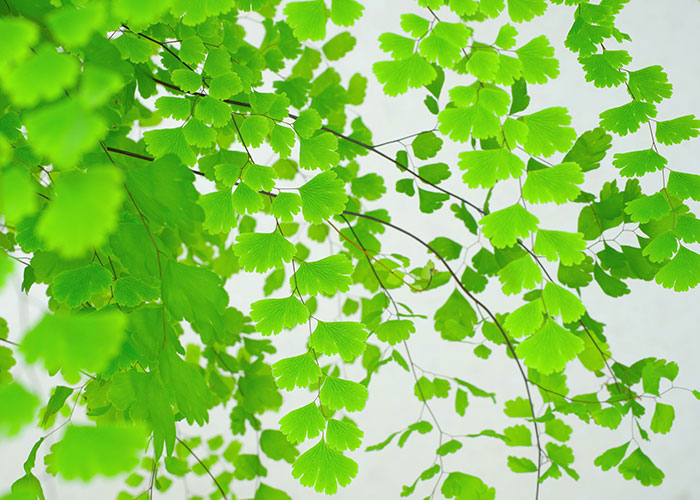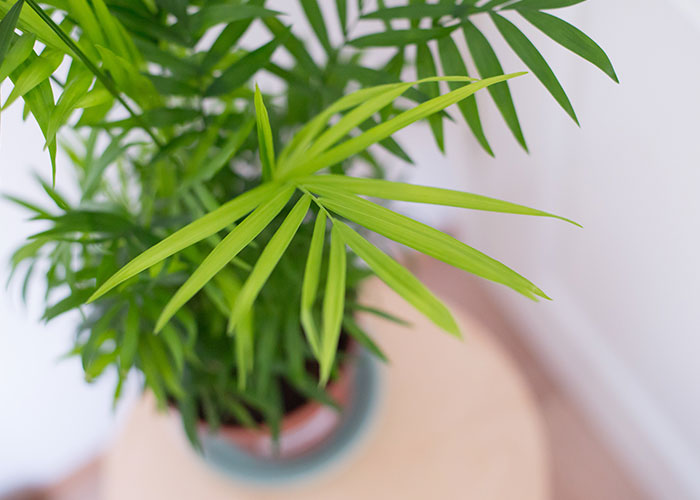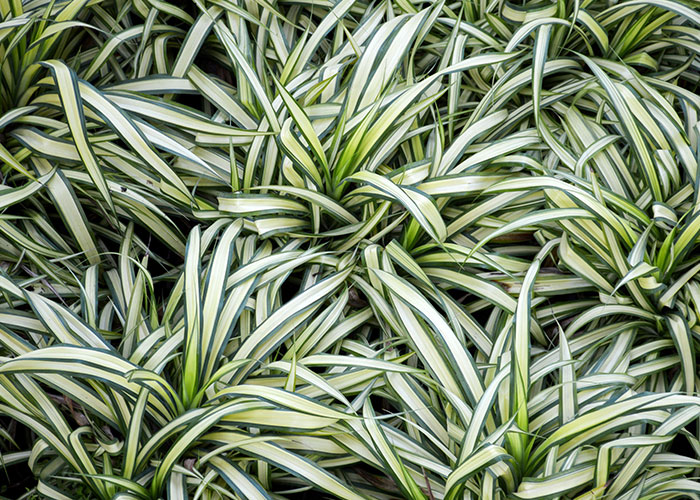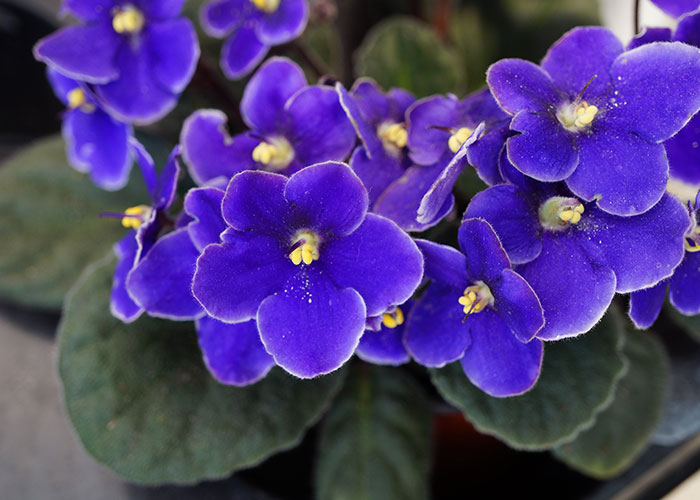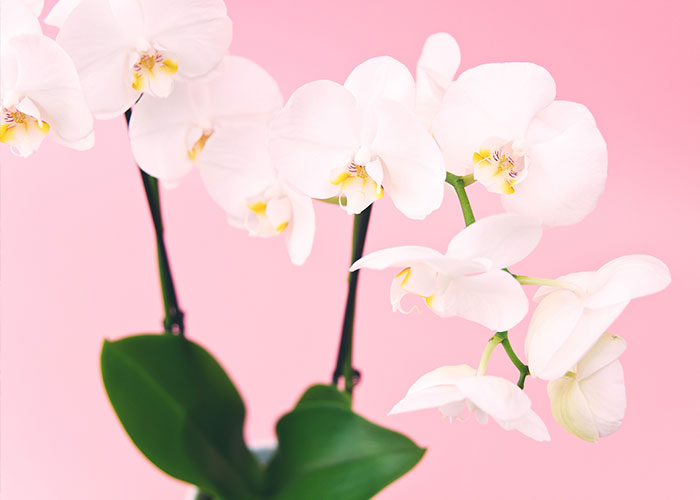12 Pet-Friendly Houseplants (& Some Common Toxic Ones)
Written by Mikaela Rice & Kaity Bevenour
We all love our plant babies, but we love our furry ones too! While it may not be the first thing we think of when eyeing a new plant for our collection, it is very important to recognize what houseplants are toxic and non-toxic for our pets to ensure their safety. Read on for 12 of our favorite pet-friendly houseplants (and some to keep away from pets)!
Please note that while we refer to these plants as non-toxic, we would not recommend leaving them in a place where your pets can easily munch on them. While there should be no long-lasting adverse effects if they take a few bites, eating a large amount of any plant can sometimes lead to stomach upset and vomiting.
Calathea, Stromanthe, & Maranata ( Prayer Plant Family )
Though the patterned leaves of the Calathea thrive best in indirect light many species with purple undersides to their leaves can also tolerate lower light, making them a popular choice for office spaces. If you’re looking for something a little more unusual check out Calathea lancifolia, also known as the rattlesnake plant – it’s wavy leaves set with dark green ovals and a purple underside make a great statement piece.
Peperomia
Peperomias aren’t your usual leafy houseplant – they come in so many shapes and sizes you’re pretty much guaranteed to find one to fall in love with. These plants are known to stay petite making them great for smaller spaces and can tolerate low light (but do best in medium-to-bright, indirect light). If you enjoy fun foliage, keep your eye out for Watermelon Peperomia – their leaves resemble the famed summer fruit!
Haworthia
Haworthias make great succulents for beginners since they can grow in lower light than many succulents (although not as low as a snake plant), grow slowly, and stay compact. If you’re seeking something truly unusual, there are also Haworthia varieties with semi-translucent “windows” on the leaves – hold them up to the light and they look like stained glass!
Echeveria
Echeverias are as varied they are popular – their distinctive rosette-shaped leaves come in all sorts of shapes, sizes, and colors sure to please both casual growers and enthusiasts alike! They are generally low-maintenance, drought-tolerant, and can tolerate a wide variety of temperatures, though some varieties are more finicky than others. It is best to bottom water these succulents when the soil has dried fully because if you allow water to pool on their leaves these delicate beauties can easily rot.
Hypoestes ( Polka Dot Plant )
Hypoestes, also known as the splash or polka dot plant, are known for their quirky, colorful leaves that are dappled in various shades from red to white. While Hypoestes can tolerate medium light, their colorful leaves will turn to a solid green, so try to keep them in a brightly-lit spot. They do very well in terrariums or under a cloche.
Tillandsia ( Air Plant )
These quirky plants don’t require soil and can be placed just about anywhere. They still need to be watered – we recommend by letting them soak in water for 10-20 minutes every 1-2 weeks as a starting point. Because they aren’t rooted in a potting medium the one precaution to take is to make sure Fido can’t grab them off a shelf and do irreparable damage!
Hoya ( Wax Plant )
Hoyas are semi-succulent plants that are easy to care for and love very bright and humid conditions. They are best known for their unique, waxy leaves and their clusters of fragrant, star-shaped flowers ranging from pink to white.
True Ferns
Not all plants with the label “fern” are non-toxic to pets – only true ferns are. Staghorn ferns and Maidenhair ferns are popular choices. The Asparagus fern, though a popular houseplant, is considered toxic. Pets may be tempted to nibble if they are close to the floor, but the foliage shouldn’t pose any risk.
True Indoor Palms
Like ferns, true palms can cohabitate safely with your fur babies, but sometimes the word ‘palm’ is a misnomer. Sago palms are actually cycads and are extremely toxic to pets. We recommend Neanthe Bella, Areca, Parlor, and Ponytail palms – they do not require much light and are generally easy to grow. Low-hanging fronds may attract some nibbling, but they will grow back.
Spider Plant
These spindly plants are nearly impossible to kill – they can tolerate low light conditions and sparse watering without kicking the bucket. They also sprout babies – known as spiderettes – that can be easily plucked, propagated, and shared with friends. According to some sources, spider plants are a mild hallucinogen to cats. But don’t worry, the effects are harmless – just make it a point to try and keep it away from Kitty since she may be particularly attracted to it!
African Violets
Beloved for their year-round vibrant blooms and ability to tolerate low light, African violets are low-maintenance plants that are suited for people of all skill levels.
Phaleanopsis Orchids
The distinctive flowers of the Phaleanopsis orchid have captivated folks for decades. These common houseplants are known for their long-lived blooms and make great gifts. If you have some 4-legged chewers in your house just make sure to keep them out of the potting mix as it sometimes contains large amounts of bark.
Common Toxic Houseplants
While these plants are considered toxic and we would generally recommend keeping them out of a household with pets, it doesn’t mean they can’t coexist with them! If you decide to bring any of these plants into your household, make sure to place them out of your pets’ reach to ensure they can’t pull them down or munch on them.
- Dracaena
- Aloe Vera
- Jade Plant
- Diffenbachia
- Sago Palm
- Aroids ( Philodendron, Monstera, Alocasia, Pothos, ZZ Plants )
- Ivy
- Snake Plant
- Peace Lily
This list is by no means exhaustive. If you’re wondering whether or not a plant is safe or would just like to do your research before paying us a visit, we highly recommend consulting the ASPCA’s Toxic and Non-Toxic Plant List. It is very detailed and includes houseplants and garden plants alike.




